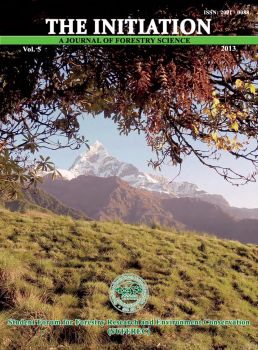Reducing Emissions from Deforestation and Forest Degradation (REDD) in Nepal: A Review
DOI:
https://doi.org/10.3126/init.v5i0.10257Keywords:
REDD, Livelihood, Strategy, Benefits, InitiativesAbstract
Reducing Emissions from Deforestation and Forest Degradation (REDD) in developing countries is a mechanism that allows industrialized countries to offset their emissions by purchasing carbon credits from developing countries, which reduce emissions from deforestation and forest degradation by avoiding such activities. The Government of Nepal is committed to REDD through reversing deforestation and forest degradation, conservation of existing forest and enhancing forest carbon stocks, while addressing livelihoods concerns at the same time since 2009 and now it has been flourished in the country along with concept of sustainable development of the forest resource of country. Nepal has undergone different stages during this process and has planned certain strategy for the future. The assemblages of the available information on REDD in Nepal is important to over view its holistic prospect, aspect and potentiality in the least developing country like Nepal which holds the greater possibility to be benefited from the REDD. Nepal is now in the process to prepare national REDD strategy by 2013 and there are different On Going REDD -Plus Piloting Initiatives in Nepal. Nepal has greater potentiality of being benefited from REDD though some policy related to it needed to be redefined and clarify.
DOI: http://dx.doi.org/10.3126/init.v5i0.10257
The Initiation 2013 Vol.5; 75-83

